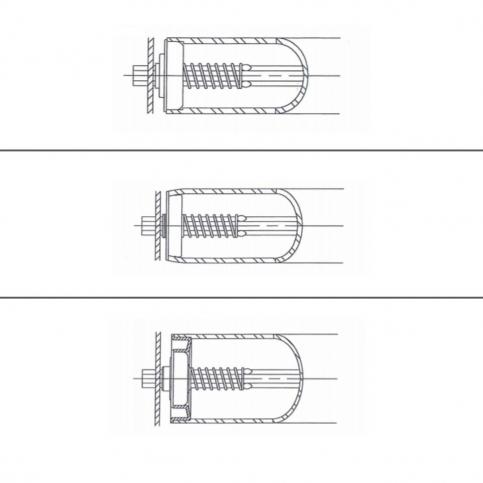
Conveyor Rollers 101: Understanding Roller Construction and Options
Roller conveyors are one of most popular conveyor types thanks to their versatility. They utilize conveyor rollers mounted parallel in frames to convey products. These kinds of conveyor systems can run by gravity, manually, and can even be powered. Whether or not you use this type of conveyor in your system will depend on your applications, for instance: the kind of products you are working with, the kind of floor space you have, the level of automation required, and timing.
If you do decide to go with this type of conveyor, there are different conveyor roller constructions to consider. Rollers are typically assembled with three major components: an axel, tube, and bearings. Rollers can be constructed differently to work better with different types of roller conveyors.
Here are some of the major constructions of conveyor rollers:
Counter bored:
as its name suggests, this roller type has a tube that is counter bored to the exact inside diameter so that the bearing can be press-fit into place.
Crimped:
the tube of this roller is crimped down over the bearing, securely holding it in place. Because of the crimping, the bearings themselves are non-replaceable.
Adapters:
this roller type features a combination of both bearings and adapters. The bearings fit into the adapters, and the adapters fit into the tubes.
Flanges, Sprockets, and Grooves:
there is an option to have flanges, sprockets, or grooves on your tubes. Flanges serve to guide products on the rollers. It is up to you to indicate to your supplier where the flanges should be located on the tube and how many flanges per tube you require. Rollers with sprockets, on the other hand, are primarily used in chain drive live roller conveyors. Like flanges, the location of the sprockets must be specified, as well as the chain size and number of teeth. Finally, grooved rollers are ideal for use with urethane drive belts, such as those in line shaft conveyors. Similarly, the location of the grooves and the roller diameter must be specified by the user.
Special coverings:
there is an option to outfit your rollers with coverings, with materials such as molded-on urethane, slide-on sleeves, or PVC covers. Specify your chosen material along with durometer and thickness when ordering special coverings from your supplier.
On top of this, there are more options when it comes to roller construction, including tapered rollers, rollers with shot guards, hardened rollers, and rollers with lagging. Ultimately, the specific type of roller you use will depend on your unique needs, and you will need to specify all the crucial information to your supplier so that they can provide you with the best product.
No matter the type of system you are looking for, you can rest assured that Norpak Handling has the right solutions. Call us today to speak to a knowledgeable sales representative, who will be able to guide you through the process of selecting the right conveyor rollers for your needs.
This blog is part of a series on conveyor rollers. Stay tuned for part 2 about information required to order replacement rollers!









